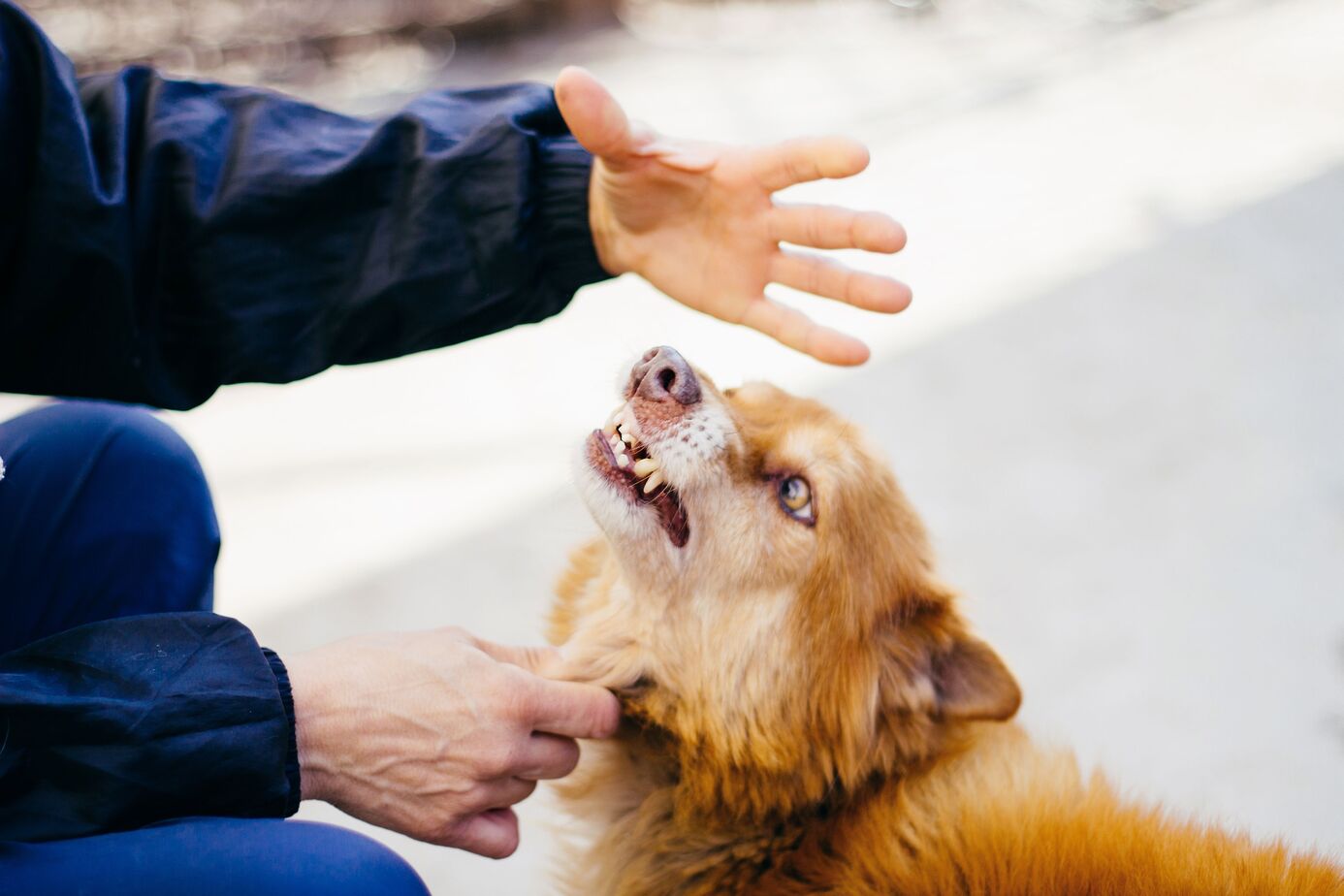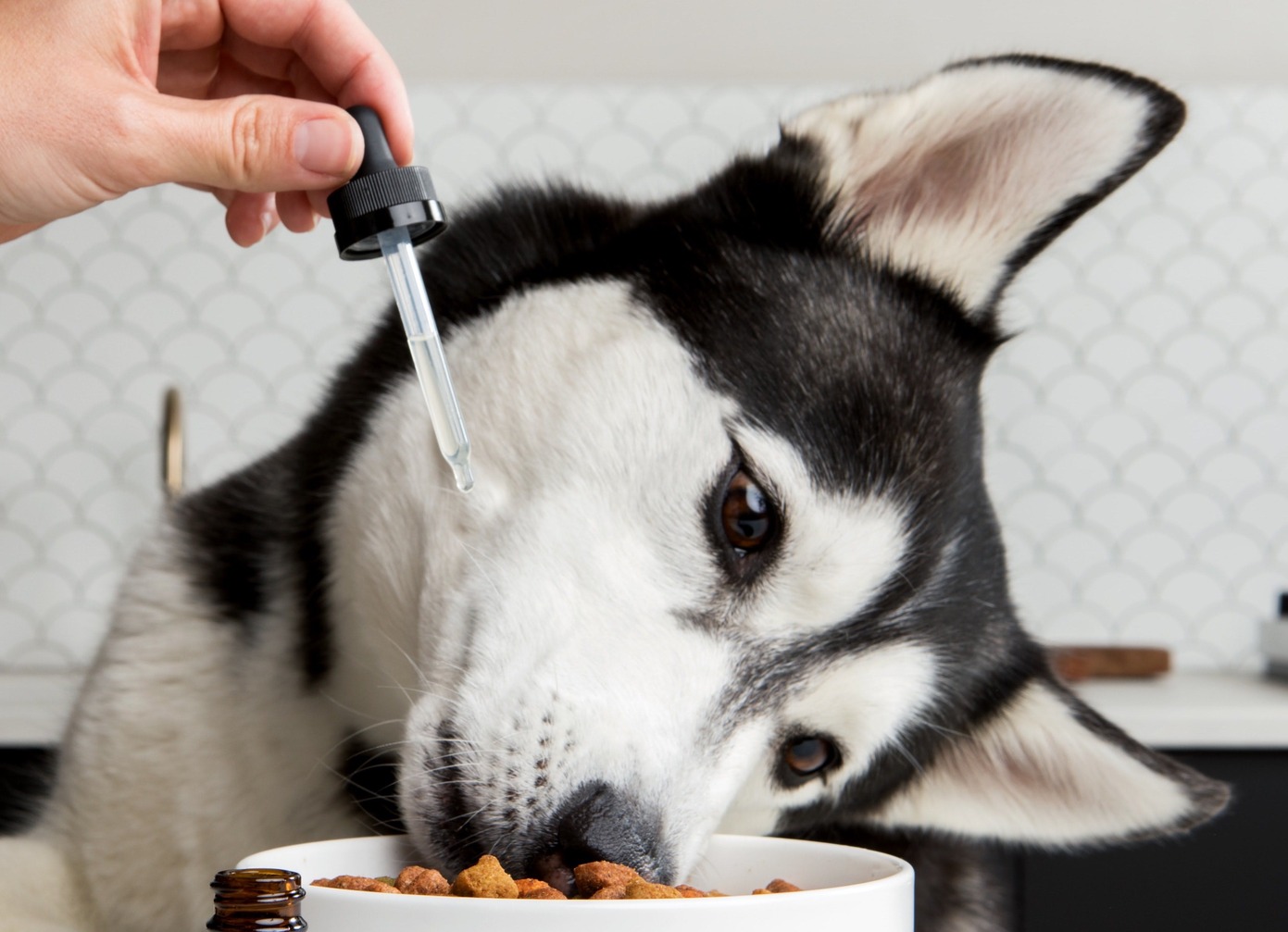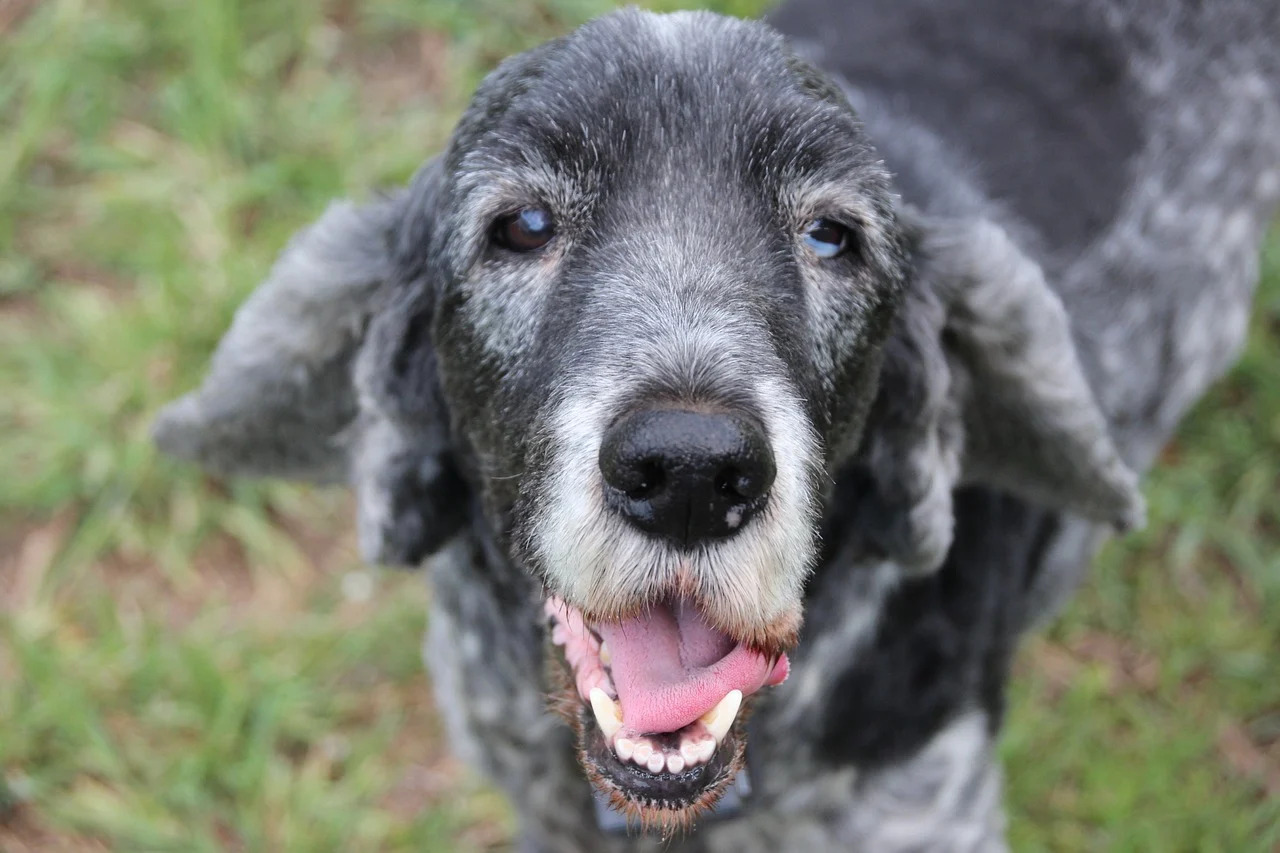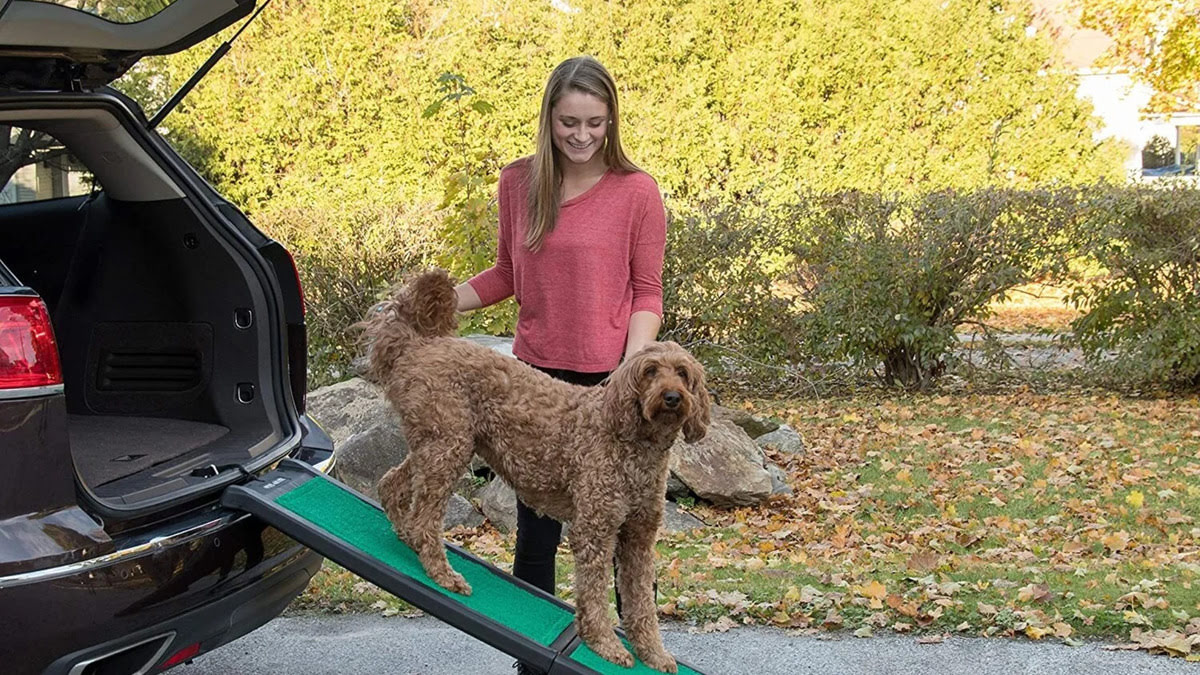Home>Health & Wellness>Behavior & Cognitive Care>How To Keep My Senior Dog From Being Bored


Behavior & Cognitive Care
How To Keep My Senior Dog From Being Bored
Modified: February 21, 2024
Discover effective strategies for preventing boredom in your senior dog with behavior and cognitive care tips. Keep your furry friend engaged and happy!
(Many of the links in this article redirect to a specific reviewed product. Your purchase of these products through affiliate links helps to generate commission for Pawsomeoldies.com, at no extra cost. Learn more)
Table of Contents
- Introduction
- Understanding the signs of boredom in senior dogs
- Providing mental stimulation through interactive toys and puzzles
- Incorporating new activities and exercises into your senior dog's routine
- Enriching your senior dog's environment with sensory experiences
- Spending quality time with your senior dog through bonding activities
- Conclusion
Introduction
As our beloved canine companions age, it's essential to pay close attention to their mental and emotional well-being. Senior dogs, like humans, can experience boredom, which can lead to a decline in their overall quality of life. Recognizing the signs of boredom in senior dogs and taking proactive steps to alleviate it is crucial for ensuring their happiness and vitality in their golden years.
Boredom in senior dogs can manifest in various ways, including decreased interest in activities, excessive sleeping, restlessness, and even destructive behavior. It's important for pet parents to be attuned to these signs and address them effectively to prevent boredom from taking a toll on their furry friend's well-being.
In this comprehensive guide, we will explore practical and engaging strategies to keep senior dogs from being bored. From providing mental stimulation through interactive toys and puzzles to incorporating new activities and exercises into their routine, we will delve into various approaches to enriching their lives. Additionally, we will discuss the importance of enriching their environment with sensory experiences and spending quality time engaging in bonding activities.
By implementing these strategies, pet parents can ensure that their senior dogs remain mentally sharp, physically active, and emotionally fulfilled. Let's embark on this journey to discover the myriad ways to keep our senior dogs happy, engaged, and free from the clutches of boredom.
Read more: Why Does My Senior Dog Keep Whining?
Understanding the signs of boredom in senior dogs
Recognizing the signs of boredom in senior dogs is essential for maintaining their overall well-being and happiness. As our furry companions age, they may experience a shift in their energy levels and interests, making it crucial for pet parents to be vigilant in identifying signs of boredom. By understanding these indicators, we can take proactive measures to alleviate boredom and enhance our senior dogs' quality of life.
One common sign of boredom in senior dogs is a noticeable decrease in their enthusiasm for activities they once enjoyed. This could manifest as a reluctance to engage in playtime, go for walks, or participate in interactive games. Additionally, senior dogs may exhibit increased lethargy and spend more time sleeping, showing a lack of interest in their surroundings.
Restlessness and pacing can also signal boredom in senior dogs. When they feel unstimulated, they may wander aimlessly or exhibit repetitive behaviors, indicating a need for mental and physical engagement. Furthermore, destructive behavior, such as excessive chewing, digging, or scratching, can be a manifestation of boredom in senior dogs, as they seek ways to alleviate their restlessness and frustration.
Changes in appetite and weight can also be indicative of boredom in senior dogs. A lack of mental stimulation and engagement can lead to disinterest in food or overeating, potentially resulting in weight fluctuations. Additionally, senior dogs may display increased vocalization, such as excessive barking or whining, as a means of expressing their boredom and seeking attention.
Furthermore, senior dogs experiencing boredom may demonstrate heightened clinginess or separation anxiety, seeking constant reassurance and attention from their pet parents. This behavior can stem from a lack of mental stimulation and a desire for companionship and interaction.
By recognizing these signs of boredom in senior dogs, pet parents can intervene effectively to provide the mental and physical stimulation their furry companions need. Understanding these indicators enables us to implement strategies that will enrich our senior dogs' lives, keeping them mentally sharp, physically active, and emotionally fulfilled in their golden years.
Providing mental stimulation through interactive toys and puzzles
Interactive toys and puzzles play a pivotal role in keeping senior dogs mentally engaged and stimulated. These innovative and engaging tools not only provide mental exercise but also offer opportunities for problem-solving and cognitive enrichment.
When selecting interactive toys for senior dogs, it's essential to consider their individual preferences and abilities. Puzzle feeders, for instance, can be filled with treats or kibble, encouraging senior dogs to use their problem-solving skills to access the rewards. This not only stimulates their minds but also provides a source of mental enrichment during meal times.
Furthermore, interactive toys such as treat-dispensing balls or cubes can captivate senior dogs' attention, prompting them to strategize and manipulate the toys to access the hidden treats. This not only provides mental stimulation but also encourages physical activity, contributing to their overall well-being.
In addition to treat-based toys, interactive puzzles designed for dogs can offer mental challenges that promote cognitive agility. These puzzles often require dogs to navigate through various compartments or manipulate movable parts to reveal hidden treats or toys. Engaging with these puzzles not only keeps senior dogs mentally sharp but also provides a sense of accomplishment as they successfully solve the challenges.
Moreover, interactive toys that emit sounds or have different textures can engage a senior dog's senses, providing sensory stimulation alongside mental enrichment. The variety of textures and sounds can pique their curiosity and keep them engaged, preventing boredom and promoting mental alertness.
Introducing new interactive toys and puzzles regularly can prevent senior dogs from becoming accustomed to a particular toy, ensuring that they remain mentally stimulated and engaged. Rotating the selection of toys can maintain their interest and enthusiasm, providing ongoing mental challenges and preventing monotony.
By incorporating a variety of interactive toys and puzzles into their routine, pet parents can effectively provide mental stimulation for their senior dogs, keeping their minds active, engaged, and free from boredom. These enriching activities not only promote cognitive well-being but also contribute to a fulfilling and enjoyable life for our beloved senior canine companions.
Incorporating new activities and exercises into your senior dog's routine
As senior dogs age, their physical abilities and energy levels may change, but it's crucial to continue incorporating new activities and exercises into their routine to promote their overall well-being. By introducing stimulating and age-appropriate activities, pet parents can help their senior dogs stay physically active, mentally engaged, and emotionally fulfilled.
One effective way to introduce new activities is to incorporate gentle exercises tailored to a senior dog's needs. Low-impact activities such as leisurely walks, gentle swimming, or supervised play sessions can help maintain their mobility and joint flexibility without placing undue stress on their aging bodies. These activities not only provide physical exercise but also offer mental stimulation as senior dogs explore new environments and engage with their surroundings.
Furthermore, mental stimulation can be achieved through novel experiences such as short, leisurely hikes in nature or visits to pet-friendly parks. These outings allow senior dogs to engage their senses, explore new scents, and experience the sights and sounds of the outdoors, providing a refreshing change of scenery and mental enrichment.
Incorporating age-appropriate games and activities into a senior dog's routine can also provide mental and physical stimulation. For instance, hide-and-seek games with favorite toys or treats can engage their cognitive abilities and encourage light physical activity. Additionally, gentle obedience training sessions tailored to their abilities can provide mental challenges and strengthen the bond between pet parents and their senior dogs.
Introducing new toys specifically designed for senior dogs, such as soft and easily graspable chew toys or gentle tug-of-war ropes, can offer enjoyable and low-impact physical activities. These toys not only provide mental stimulation but also encourage light exercise, promoting muscle tone and joint mobility.
Moreover, engaging in gentle massage sessions can be a soothing and beneficial activity for senior dogs. Massage not only promotes relaxation and comfort but also helps improve circulation and joint flexibility, contributing to their overall physical well-being.
By incorporating a variety of new activities and exercises into their routine, pet parents can ensure that their senior dogs remain physically active, mentally stimulated, and emotionally content. These enriching experiences not only contribute to their overall health but also foster a strong and enduring bond between pet parents and their beloved senior canine companions.
Enriching your senior dog's environment with sensory experiences
Enriching a senior dog's environment with sensory experiences is a powerful way to stimulate their cognitive abilities, engage their senses, and enhance their overall well-being. As dogs age, their sensory perception may change, making it essential to provide enriching experiences that cater to their evolving needs.
One effective way to enrich a senior dog's environment is by introducing a variety of textures and surfaces in their living space. Soft, plush bedding can offer comfort and support while providing tactile stimulation. Additionally, incorporating textured mats or rugs can engage a senior dog's sense of touch, offering a diverse sensory experience within their immediate surroundings.
Furthermore, introducing stimulating scents into their environment can captivate a senior dog's sense of smell, providing mental enrichment and sensory engagement. Scented toys or diffusing natural aromas, such as lavender or chamomile, can create a calming and enriching olfactory experience for senior dogs, promoting relaxation and mental stimulation.
Incorporating soothing sounds, such as classical music or nature sounds, can create a serene auditory environment for senior dogs. Gentle background music or ambient sounds can have a calming effect, reducing anxiety and promoting a sense of tranquility. Additionally, exposure to nature sounds, such as birdsong or rustling leaves, can evoke a connection to the outdoors, enriching their sensory experience.
Introducing visual stimulation through strategically placed windows or elevated resting spots can offer senior dogs opportunities to observe their surroundings and engage with visual stimuli. Access to natural light and views of the outdoors can provide mental stimulation and prevent feelings of isolation, contributing to their overall well-being.
Moreover, incorporating sensory enrichment activities, such as gentle brushing or grooming sessions, can provide tactile stimulation and promote relaxation. Engaging in gentle massage or brushing not only fosters a sense of physical comfort but also strengthens the bond between pet parents and their senior dogs, enhancing their emotional well-being.
By enriching their environment with diverse sensory experiences, pet parents can ensure that their senior dogs remain mentally engaged, physically comfortable, and emotionally fulfilled. These sensory enrichments not only contribute to their overall well-being but also create a nurturing and stimulating environment that supports their cognitive and sensory needs in their golden years.
Spending quality time with your senior dog through bonding activities
Spending quality time engaging in bonding activities with your senior dog is not only a delightful experience but also a crucial component of their overall well-being. As our canine companions age, the significance of nurturing a strong and enduring bond becomes increasingly vital, fostering emotional fulfillment and a sense of security for senior dogs.
One of the most enriching bonding activities for senior dogs is gentle and affectionate physical contact. Spending quiet moments cuddling, petting, and offering gentle massages can create a profound sense of comfort and security for senior dogs. This physical closeness not only promotes relaxation but also strengthens the emotional connection between pet parents and their furry companions, fostering a deep and enduring bond.
Engaging in interactive play sessions tailored to a senior dog's abilities can be a joyful and enriching bonding activity. Choosing age-appropriate toys and games that cater to their preferences and physical capabilities allows senior dogs to experience the joy of play while strengthening the bond with their pet parents. Whether it's a leisurely game of fetch or a gentle tug-of-war, these interactive play sessions provide mental stimulation, physical activity, and an opportunity for shared enjoyment.
Incorporating leisurely walks in familiar and comfortable surroundings can offer valuable bonding opportunities for senior dogs and their pet parents. These relaxed strolls provide a chance for senior dogs to explore their environment, engage their senses, and enjoy the companionship of their pet parents. The shared experience of a leisurely walk not only promotes physical activity but also strengthens the emotional connection, creating cherished moments of togetherness.
Furthermore, involving senior dogs in calming and meditative activities, such as gentle yoga or relaxation exercises, can be a serene and bonding experience. Creating a tranquil environment and engaging in soothing activities together can promote a sense of calm and well-being for both senior dogs and their pet parents, fostering a deep and harmonious bond.
In addition to these activities, simply spending quality time in each other's company, whether it's quietly reading together or enjoying a peaceful afternoon in the garden, can be a profoundly meaningful bonding experience for senior dogs and their pet parents. These moments of shared companionship and closeness contribute to the emotional well-being of senior dogs, strengthening the bond and creating lasting memories.
By prioritizing bonding activities and spending quality time with our senior dogs, we can ensure that they feel cherished, secure, and emotionally fulfilled. These bonding activities not only enrich their lives but also create enduring and heartwarming connections that enhance their overall well-being in their golden years.
Conclusion
In conclusion, the well-being of our senior dogs is a responsibility that encompasses not only their physical health but also their mental and emotional fulfillment. Recognizing the signs of boredom in senior dogs and taking proactive steps to alleviate it is crucial for ensuring their happiness and vitality in their golden years.
By understanding the signs of boredom in senior dogs, pet parents can intervene effectively to provide the mental and physical stimulation their furry companions need. Recognizing these indicators enables us to implement strategies that will enrich our senior dogs' lives, keeping them mentally sharp, physically active, and emotionally fulfilled.
From providing mental stimulation through interactive toys and puzzles to incorporating new activities and exercises into their routine, we have explored various approaches to keeping senior dogs from being bored. Interactive toys and puzzles play a pivotal role in keeping senior dogs mentally engaged and stimulated, providing mental exercise and opportunities for problem-solving and cognitive enrichment.
Incorporating new activities and exercises tailored to a senior dog's needs is essential for promoting their overall well-being. By introducing stimulating and age-appropriate activities, pet parents can help their senior dogs stay physically active, mentally engaged, and emotionally fulfilled.
Enriching a senior dog's environment with sensory experiences is a powerful way to stimulate their cognitive abilities, engage their senses, and enhance their overall well-being. By providing diverse sensory experiences, pet parents can ensure that their senior dogs remain mentally engaged, physically comfortable, and emotionally fulfilled.
Spending quality time engaging in bonding activities with senior dogs is not only a delightful experience but also a crucial component of their overall well-being. Prioritizing bonding activities and spending quality time with our senior dogs ensures that they feel cherished, secure, and emotionally fulfilled, creating enduring and heartwarming connections that enhance their overall well-being in their golden years.
In essence, by implementing these strategies and approaches, pet parents can ensure that their senior dogs remain mentally sharp, physically active, and emotionally fulfilled, free from the clutches of boredom. It is through our dedication and commitment to their well-being that we can provide our senior dogs with a fulfilling and joyful life, filled with love, engagement, and meaningful companionship.














